




 [Radtour Nord2]
[Radtour Nord2]
History of Dorsten - Station 41: the church of St Paulus - the cradle of religious belief in Dorsten. Translator: Lyn
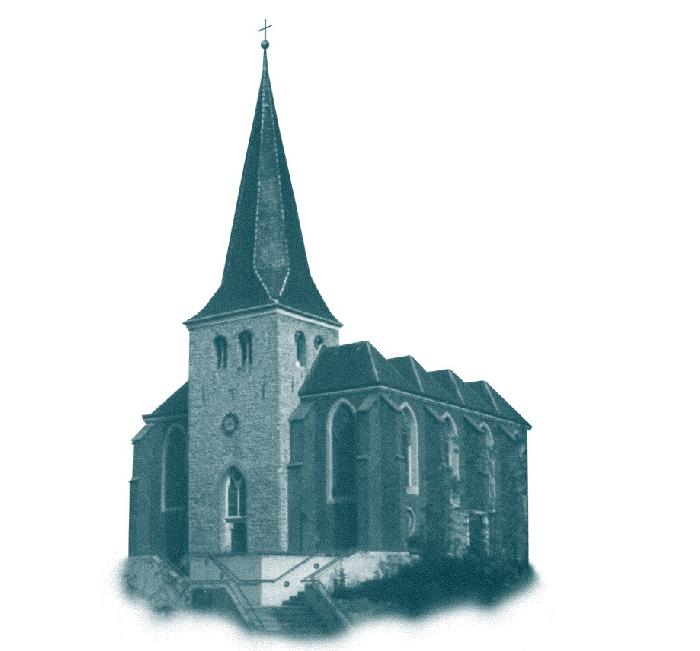
There is no better location for the history station than its church, because as the church building is the oldest in the town, it is quasi the cradle of Christian belief in Dorsten.
According to the historical scripts, Saint Liudger ("der heilige Liudger") is supposed to have built the place of worship on a dune, during a missionary journey, in the year 800.
Since then, the church "St-Paulus-Kirche" has been modified and renovated many times. These developments have been researched by the pupils of the History Club of the Petrinum Grammar School, in close co-operation with the local history society. "Orts- und Heimatkunde Dorsten", the Lions-Club Dorsten-Hanse and the town's archive have researched these developments.
The text entitled "St Paulus - Rückblick in die Geschichte" (St Paulus - a Historical Overview") written in 1997 by Annegret Steven and Dirk Steinberg was particularly useful for reappraising the older history of the church. The teacher, Dr Josef Ulfkotte and his History Club had already made the first outline for the History Station in 2005. This was then improved and updated in the following years.
|
The Franconian King Karl ("Frankenkönig Karl") is crowned in Rome by Pope Leo III.
| _ |
ca. 800 |
_ |
According to the legends about its origin, the church "St. Paulus-Kirche" stands today at the site of a Germanic place of cultural interest. St Liudger (der hl. Liudger) is supposed to have built a place of worship here on one of his missionary journeys. This received the church title of "Pauli Bekehrung" (Paul's Conversion", which, up until now, within the diocese, only the cathedral in Münster also has. |
|
|
1068 |
_ |
There is documentarial proof of a church in Hervest at this time. | |
|
|
ca. 1150 |
_ |
Most of the important structure of the Romanesque tower of the church originate from this date. | |
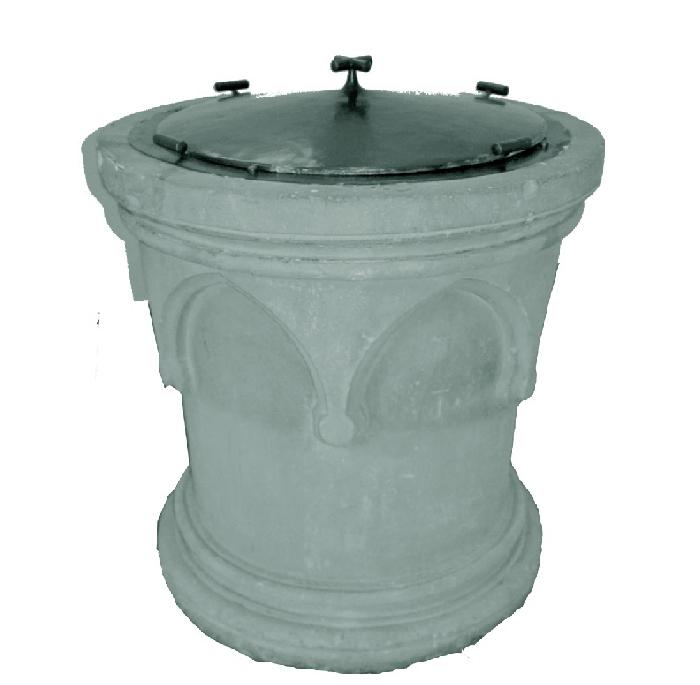 The 13th century font. |
13. Jh. |
_ |
The church receives the font, which is still used, today. | |
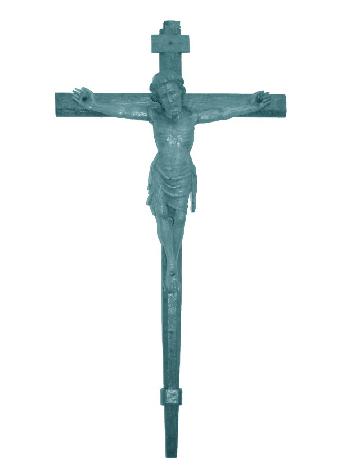 Processional Cross ("Vortragekreuz") First half of the 14th Century. |
1443 |
_ |
Because of the extraordinary size of the area of the Parish of St Paulus, the independent parish of St Antonius is established in the village of Holsterhausen ("Dorf Holsterhausen"). | |
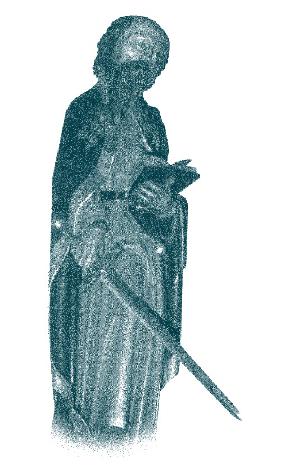 The statue of Paulus (around 1500) |
1468 |
_ |
A bell tuned to the tone of A ("A-Glocke") is installed in the church tower and five years later, a bell tuned to the tone of B is intalled. ("H-Glocke"). | |
|
|
1641 |
_ |
Despite the general crisis situation towards the end of the 30-year war (30-jähriger Krieg), the parish adds a bell tuned to the note of "G" (G-Glocke) to the chimes. | |
|
Ludwig XIV begins building his lavish Palace of Versailles. 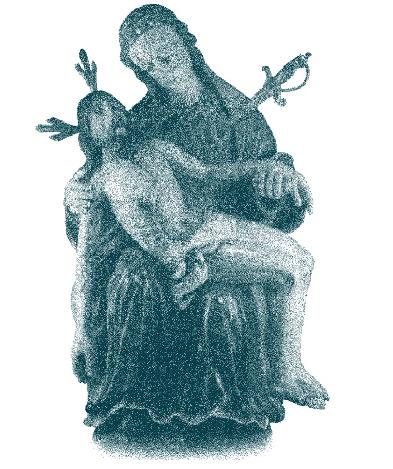 Pietá | _ |
1662 |
_ |
Following the completion of the high altar in 1661, an organ and a pulpit are acquired. |
|
|
1895 |
_ |
The centuries-old nave is demolished and replaced by a larger middle section comprised of three naves. The tower and the chancel are retained. Additionally, a new high altar and a Joseph- and Mary dedicated altar ("Josefs- und Marienaltar") are put in the aisles. | |
|
|
1916 |
_ |
The creation of miner's residential areas results in the establishment of the quasi-parish "Rektoratsgemeinde St Marien" and the quasi-parish "Rektoratsgemeinde St Josef", four years later. | |
|
The Geneva Protocol prohibiting the use of chemical and biological warfare, enters into force.
| _ |
1925 |
_ |
The construction of a new ring-road cuts through the hill where the church is located and makes a supporting wall and steps necessary. |
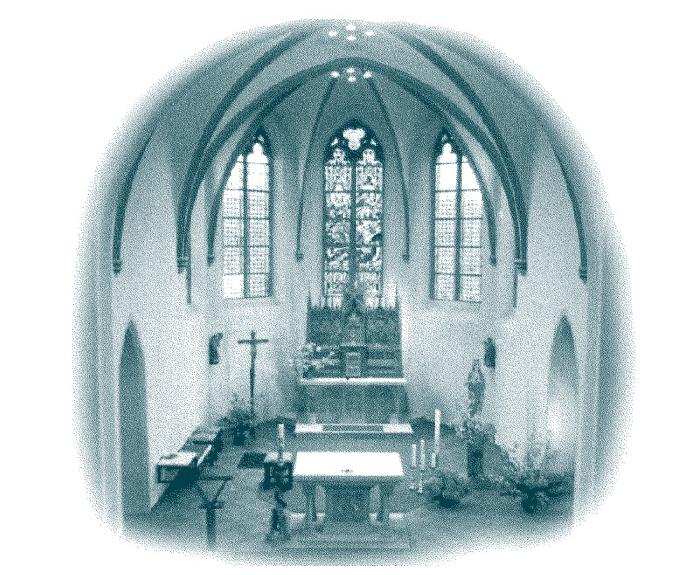 View of the chancel from the organ loft. |
1975 |
_ |
During a thorough restoration, the church and the staircases take on their present-day shape. | |
|
|
2015 |
_ |
Numerous renovations during previous years finish with the construction of a lift at the entrance, enabling access for people with disabilities. |
[zurück]
Daten und Fakten
Eröffnung - 24th January 2016
Adresse - The address "4, Dorfstraße" (Dorfstraße 4) in front of the church.
Geodaten - 51°40'23.14 7°01'16.37
Celebratory Presentation on 24th January 2016
Members of the congregation and guests were led to the rectory following their wish to see the new History Station located at the church "St-Paulus-Kirche" in the village of Hervest ("Dorf Hervest"). "It was a bit too cold for the adhesive glue, hence the History Station plaque can not yet be put in front of the church", ("Dem Kleber war es etwas zu kalt, daher konnte die Station noch nicht vor der Kirche angebracht werden") ,explained the Mayor, Tobias Stockhoff.
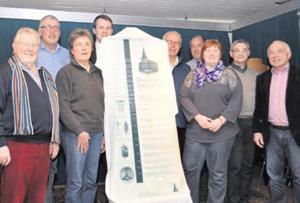
The official-opening in the Parish Hall ("Pfarrheim")
The adhesive glue would have needed 24 hours at temperatures above 5° C, in order to harden. That's why the 41st History Station of the town was unveiled yesterday in the rectory ("Pfarrheim").
"I think it is important to include local history into school lessons. We must start with informing the pupils about their neighbourhood, so that the can master the world, later on", ("Ich finde es wichtig, Lokalgeschichte in den Unterricht einzubeziehen. Wir müssen die Schüler in ihrer Umgebung abholen, damit sie sich später dann die große Welt erschließen können"), said Dr. Josef Ulfkotte.

